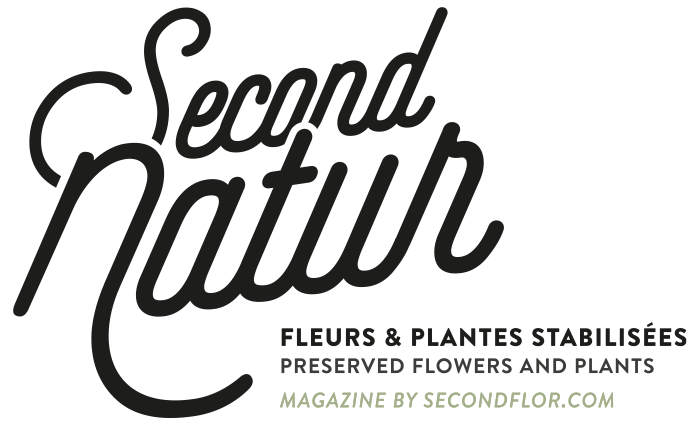Originally from Japan, Kokedama is a decorative plant art that appeared in the 1990s. It has since spread worldwide and conquered many artists and florists.
The Kokedama is the result of the encounter between three ancestral Japanese techniques. First we find the Nearai. These are wild plants in a traditional pottery, then placed on a small earthen dome. The Kusanomo, then, is a technique that uses plants of the seasons in a traditional pottery placed on a jiita (an old lacquered wooden board). Finally, the Bonsai technique, which is none other than a miniature tree, carved, planted in a pottery. The bonsai requires special care and delicate maintenance. It was these constraints that gradually led to the appearance of the Kokedama.
“Koke” means “Moss” and “Dama” means “Ball”. Literally, these moss balls are very easy to maintain and much simpler technically than their predecessors. Kokedama is often composed of plants found in forests or mountains. The technique is simple: it involves forming a sphere around the bare roots of the plant. For that, we use specific clay which we then cover with foam to obtain pretty green balls.
Adrien Bénard is one of the best known artist in the field, thanks in particular to his store which presents a majestic collection of Kokedama. He fell madly in love with this plant art during a visit to Japan. He contributed to spreading it in France, thanks in particular to his book “L’art du Kokedama” written with Marie-Pierre Baudoin.
“Nature is a universal and safe teacher for those who observe it”, Carlo Goldoni, Italian playwright.
Originally from Japan, Kokedama is a decorative plant art that appeared in the 1990s. It has since spread worldwide and conquered many artists and florists.
The Kokedama is the result of the encounter between three ancestral Japanese techniques. First we find the Nearai. These are wild plants in a traditional pottery, then placed on a small earthen dome. The Kusanomo, then, is a technique that uses plants of the seasons in a traditional pottery placed on a jiita (an old lacquered wooden board). Finally, the Bonsai technique, which is none other than a miniature tree, carved, planted in a pottery. The bonsai requires special care and delicate maintenance. It was these constraints that gradually led to the appearance of the Kokedama.
“Koke” means “Moss” and “Dama” means “Ball”. Literally, these moss balls are very easy to maintain and much simpler technically than their predecessors. Kokedama is often composed of plants found in forests or mountains. The technique is simple: it involves forming a sphere around the bare roots of the plant. For that, we use specific clay which we then cover with foam to obtain pretty green balls.
Adrien Bénard is one of the best known artist in the field, thanks in particular to his store which presents a majestic collection of Kokedama. He fell madly in love with this plant art during a visit to Japan. He contributed to spreading it in France, thanks in particular to his book “L’art du Kokedama” written with Marie-Pierre Baudoin.
“Nature is a universal and safe teacher for those who observe it”, Carlo Goldoni, Italian playwright.





